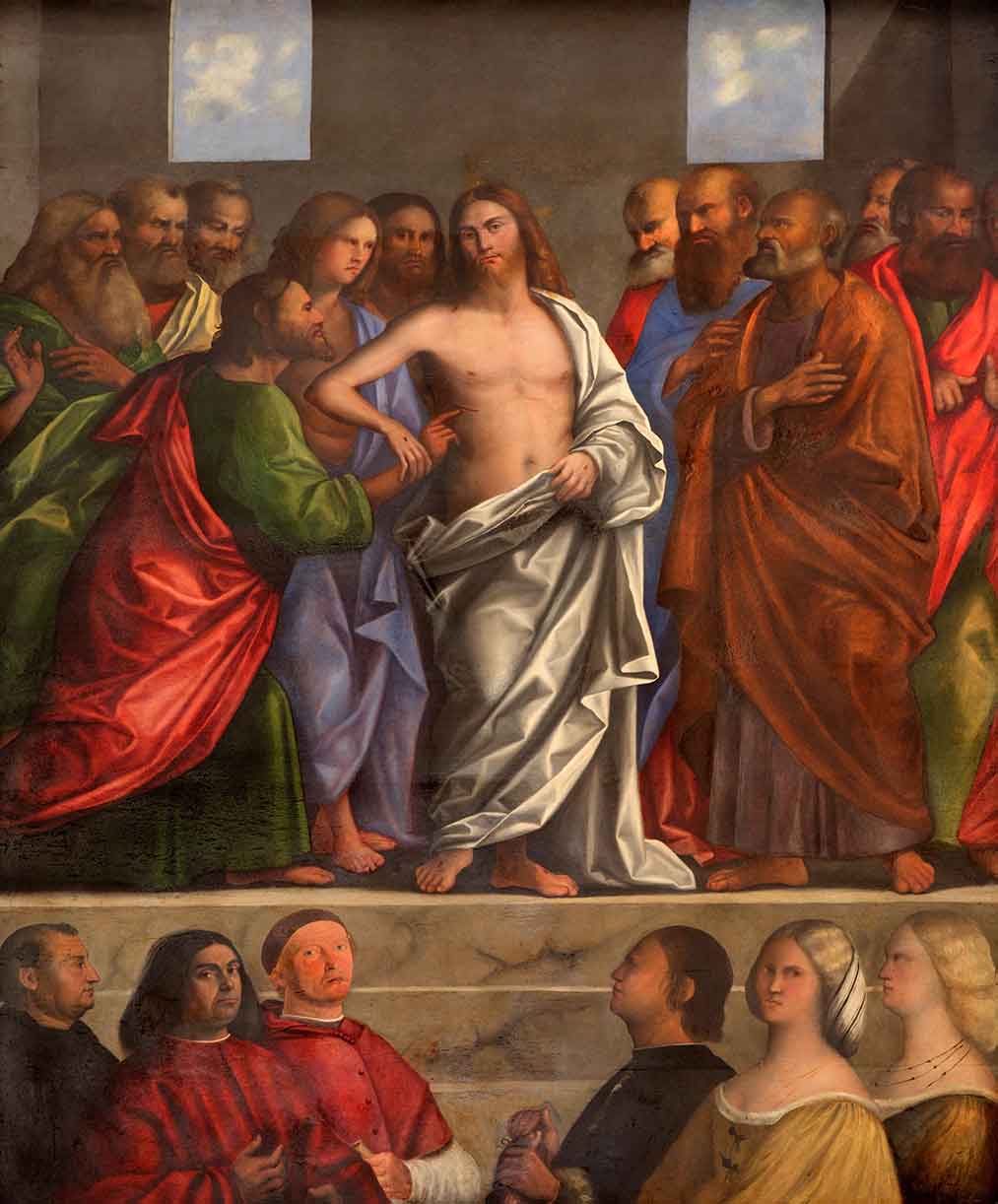
The Apostle Thomas
“Unless I see…” is the beginning of the most famous statement of disbelief in history. The apostle Thomas, the disciple who would not believe Jesus had risen from the dead without definitive proof, has stood through time as the ultimate symbol of the doubter, as firmly fixed in our consciousness as Judas is betrayer.
Yet, “doubting” Thomas should not be remembered only for his skepticism. Though he gave that statement of disbelief, Thomas also delivered the greatest confession of faith, one which began the efforts to define for the Church how Jesus could be both God and Man. In addition, Thomas was also a dynamic and courageous missionary who led the apostolic movement into Central Asia, and for twenty years spread the “good news” throughout India.
Doubting Thomas
When Jesus had appeared to the disciples in the upper room on Resurrection Sunday, Thomas had not been present. He had, in effect, missed the defining moment of Christianity when Jesus had appeared to the disciples with his request to receive the Holy Spirit. The Gospel of John does not say where Thomas had been, only that when the other disciples told him of Jesus’s appearance, Thomas responded, “Unless I see in his hands the print of the nails, and place my finger in the mark of the nails, and place my hand in his side, I will not believe.”
We can look at Thomas’s statement as one filled with contemptuous distrust—as Thomas was known to have a rather pessimistic view of life—or we can look at it as disbelief born of confusion. Thomas’s response states the conclusion he had previously drawn, which formed the basis for his disbelief—only God could rise from the dead, not a Messiah. Jewish monotheism argued against Jesus being God. How could it be, then, that Jesus, the Messiah, could be God alongside Yahweh? It is understandable, and completely reasonable, that influenced by his Jewish heritage, Thomas could not reconcile that Jesus has indeed risen: Since only God could rise again, Thomas thought Jesus had not.
“My Lord and God”
Eight days later, Thomas was in the upper room with the disciples. Jesus again came to stand among them, offering a “Peace be with you” before turning to Thomas. Remember, when Jesus had appeared to the disciples on Resurrection Sunday, he had “upbraided them for their unbelief and hardness of heart” because they had not believed Mary Magdalene and the others who saw him after he had risen. Now here he was with the apostle who had been very vocal in his statement of disbelief towards Jesus’s resurrection.
It is not hard to imagine the fear coursing through Thomas upon seeing Jesus. Like the other apostles, he must have been startled by the sudden appearance of his teacher. And surely knowing that Jesus had admonished the others for their disbelief, he must have been bracing himself for a similar castigation. However, Jesus, in an attempt to recover Thomas from his disbelief, said to him, “Put your finger here, and see my hands; and put out your hand, and place it in my side; do not be faithless, but believing.”
There is no indication in John that Thomas did made any move to touch Jesus, but he did answer him, “My Lord and my God!” This was an important and significant moment in Christian history. It was the first public statement of Jesus’s humanity and divinity. Prior to the Resurrection, the disciples had called Jesus “Lord” using the Greek “Kyrios,” which translates as a term akin to the feudal meaning of “lord.” (It did not denote “deity” as we have come to use it today.) The disciples also sometimes acknowledged Jesus as “the Son of God”; such a person would be one specially favored by God, but not actually divine as Jewish monotheism would not allow for this belief.
Thomas, the doubter, was the first person to acknowledge that Jesus was not only Lord (human), but also God (divine). While it would take the next 350 years for the Church to work through to an understanding of how this can be so, Thomas deserves the credit for starting that process.
A Far-Reaching Ministry
After Thomas had exclaimed, “My Lord and God,” Jesus said to him, “You have believed because you have seen me. Blessed are those who have not seen and yet believe.” Think on that for a moment in relation to the mission of the Church. Thomas had stated that he would not believe unless he saw the wounds on Jesus’s body. If he would not believe, an apostle who had spent so much time with Jesus, how were others who had never seen Jesus supposed to believe?
As we know, faith is the ability to believe when there is no physical proof. Faith is belief in teachings given by the Church and through apostolic traditions. Most importantly, faith is trusting God’s word, as found in scripture. Thomas must have realized that his need for seeing to believe would not translate well in the mission of the Church. It would leave a very small community of Christian believers, all of whom were destined to die within a generation.
“Blessed are those who have not seen and yet believe.” It is apparent that Thomas listened well to Jesus’s words, for he became a dynamic and vigorous evangelist. Tradition says that while other apostles traveled the western world, Thomas traveled east, beyond the borders of the Roman Empire. After establishing a Christian church in Babylon, Thomas traveled to India, arriving around AD 52. There he converted nearly 20,000 inhabitants to Christianity. However, in 72, Thomas was speared to death by soldiers sent by an Indian ruler who thought Thomas’s teachings were detrimental to his kingdom. Thomas died on a hillock in Chennai, India, on what is known today as St. Thomas Mount. Relics of Saint Thomas are kept in the St. Thomas Cathedral Basilica in Chennai.
